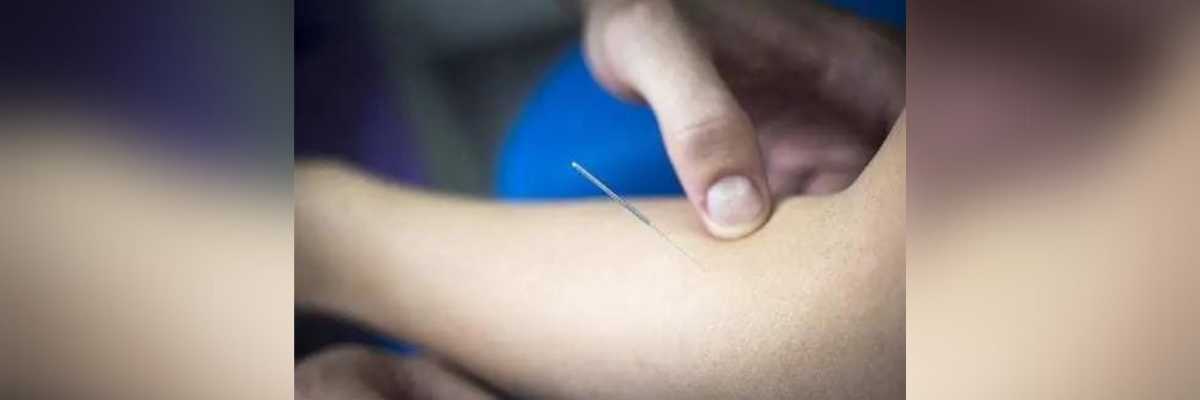Dry needling is a soft tissue technique that is applied to the treatment of myofascial pain. Myo- means muscle and fascia is a connective tissue that encloses each muscle in the body. Fascia is a network of connective tissue that has communicative properties, similar to the nervous system. An active trigger point is a part of a muscle and the fascia surrounding it that is hyperactive or irritated. A trigger point transmits pain to another area of the body. The trigger point that is the source of pain may be directly next to the area of pain or far away from it. For example, the levator scapula muscle runs from the cervical spine to the shoulder blade; it is often a source of neck pain. In contrast, the piriformis muscle that runs from the tail bone to the hip joint can cause pain in the back of the thigh. It is commonly mistaken for sciatica because it resembles the pain caused by a herniated lumbar disc.

Dry Needling 101
Trigger Points
Trigger points were first discovered by Janet Travell. She was a medical doctor who researched musculoskeletal pain. She created maps of trigger points and their pain patterns, called myofascial pain syndromes. These myofascial pain syndromes are studied by physicians today. A full evaluation of the musculoskeletal system and nervous system will show where the patient’s pain is coming from. The doctor needs to be sure that the trigger point is a source of pain for the patient before dry needling is performed.
What to Expect
A consultation and examination are necessary before a patient undergoes a trigger point dry needling treatment. First, the doctor asks the patient about his or her pain and gets a full history of the problem. Then the doctor evaluates the musculoskeletal system, especially the muscles that are typically involved in the patient’s pain according to the myofascial pain maps. Dry needling begins with a thorough assessment of the tissues involved in the patient’s pain. The muscles are evaluated for active trigger points. The doctor finds an active trigger point by applying pressure and rolling her finger over the muscle. The muscle will feel ropy and restricted. The point may be very tender to the patient.
Dry needling treatments typically last 20 minutes. When dry needling is performed, the doctor will “seat the needle” in the fascia. The doctor twists the needle in order to wrap the fascia around the needle. Sometimes the patient feels a mild dull ache when this is done. It is necessary to seat the needle in the fascia so that it can be manipulated properly. The needle is manipulated once it is placed in the trigger point. The doctor will spread the skin around the needle and move the needle up and down. The tip of the needle never comes out of the skin because it is deep in the muscle. The needles are gently pulled out once the doctor feels the muscle relax or when the needle releases from the muscle. It is very rare that a person will bleed at the needle insertion site. A needle is never placed in a nerve or blood vessel. It is common to experience some soreness in the area that was dry needled, but it passes quickly.
Dry Needling vs. Acupuncture
Many patients wonder how dry needling differs from acupuncture. Acupuncture and dry needling have a few similarities. Dry needling involves the use of the same tiny needles that are used in acupuncture. The needles do not have medicine in them. Dry needling is different from acupuncture in several ways, the most prominent being that acupuncture needles are placed in specific acupuncture points that are tied to meridians or channels of energy that run through the body. Acupuncture needles stay stationary during the entire treatment session.
Chiropractic adjustments and dry needling work simultaneously to improve musculoskeletal pain. As stated earlier, a trigger point is a hyperactive or irritated part of a muscle. It is known that when a nerve has interference it will cause irritation in the tissue that it supplies. Chiropractic adjustments remove nerve interference between the brain and the muscle that the nerve controls. Therefore, adjustments can reduce the hyperactivity or irritation in a muscle. I’ve found that patients get the best results when they get adjusted before they have dry needling performed.
To learn more about dry needling, contact Loehr Chiropractic & Acupuncture today. Give us a call at 417-887-8075 or contact us online for more information.

